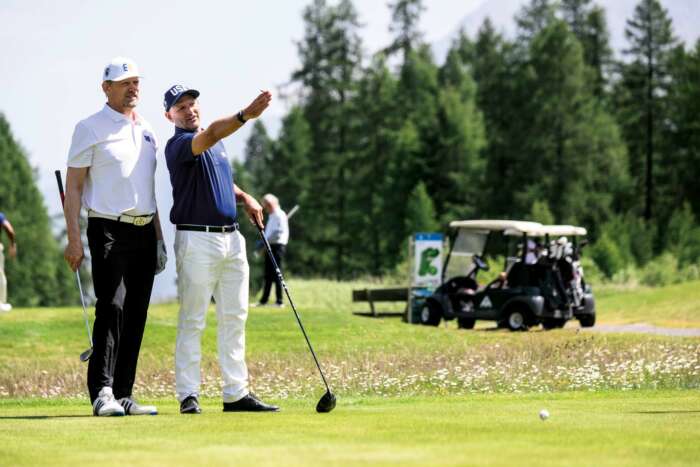How did your interest in kite sports begin?
It really began when Wolf Beringer, an early advocate of kiteskiing on frozen lakes and fields, came to Lake Silvaplana to test his new parawing. When kites first started appearing in the winter it was all very new and many people came to watch them. At first the kites were mainly being built for expeditions; for example, Reinhold Messner, the Italian mountaineer and explorer, came to Silvaplana to test some kites for an expedition to Antarctica. I was allowed to try the kites and had so much fun. It gave me the idea to offer lessons to tourists and then I started to organise events and kiteskiing lessons on the frozen lake.
How did you transfer kiteskiing onto water?
Some of us had, for some time, wanted to try kites on the unfrozen lake but we didn’t have the right equipment. It was a logical step as it is all about using the traction of the kite to move forward, preferably at speed. I think we tried for about five years to get into the water with the kites, but it only really worked when going downwind. I was on holiday in France in 1998 when I heard about a guy who had a special board for kitesurfing. I found him and I bought a directional board with a handle kite, and for the first time I was able to travel upwind.
How would you describe the state of kitesurfing today?
Its popularity has really grown. Years ago we were like a family – there were so few of us that everybody knew everyone else. Now it has a much bigger following but it is just as much fun. The kite surfing equipment is much safer, which means it is easier to learn than ever before. If you are fit and healthy, it is a watersport that has appeal for everyone, even if you are a bit older. The key is to have lessons first – you can learn the basics, how to be safe and the risks. Once you can glide easily across the water you can progress quickly and start learning new tricks.
Why is kitesurfing so much fun in Lake Silvaplana?
It is fantastic to be able to do this sport surrounded by such incredible scenery – there are magnificent views. It also has the famous Maloja wind, which usually begins to blow after the hills start to warm up at around 11am. If there is no wind in the morning, you can ride your bicycle, play tennis or hike up the mountain.
Finally, what would you say is the sport’s main appeal?
It is the opportunity it offers to be out in nature, feeling the power of the wind and being able to move over the water without a motor and leap into the air. You feel free – it’s just you and the elements.
To find out more about the sport of kitesurfing, read our article at towerrevue.com/stories/kitesurfing-St-Moritz



















